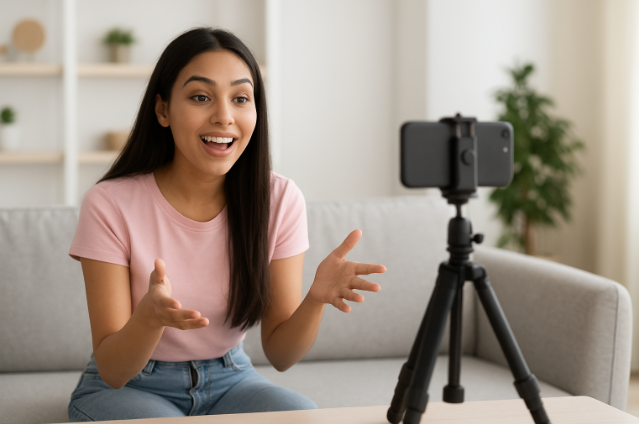
Almost every social media trend traces its roots back to the lockdown. Social media became a major escape, offering entertainment and connection during isolation. This period amplified its influence on everyday life and lifestyle choices. It transformed boredom into a compulsion to consume viral content—short, relatable clips that audiences rewatched endlessly.
The boom in such content led to an explosive rise in creators and influencers. What began as a pastime of sharing snippets of life evolved into crafting idealized lifestyles, monthly mood boards, and aesthetic goals. From makeup tutorials to travel vlogs, romanticized cooking to daily routines, creators explored every possible niche with the hope of resonating with people.
After lockdown restrictions lifted, content creation surged further. Cafés, exotic dishes, and lifestyle aesthetics dominated posts. Everyday explorations morphed into adventurous storytelling and step-by-step vacation guides. Social media also became a hub for education and information, not just entertainment. Initially, the audience embraced this colorful, idealized lens on life. Creativity was fresh, experimental, and flexible—sparking genuine influence.
However, as creators monetized their content, priorities shifted. The goal was no longer to create for the audience but to please just enough to profit. Content began to control its creators rather than the other way around. Influence turned into branding; personal creativity became commercial business. Capitalism had infiltrated the creator economy.
When monetization dominates, quantity often overshadows quality. Creativity gets sidelined. Experimentation fades. Once-inspiring concepts became repetitive, reused, and unremarkable. Artists tailored their work for revenue, transforming art into a mere money-making tool. Oversaturation meant that most content looked and felt the same. This redundancy exhausted audiences, who started craving novelty elsewhere.
As life normalized, viewers shifted toward fresher entertainment. The once-idealized picture of influencer lifestyles lost its charm. People visited social media only for casual breaks. This shift marked the process of de-influencing—a natural decline when influence no longer offers originality. Attempts to revive the creator economy lacked genuine creative force, and with that, the influence that once held so much value diminished.
